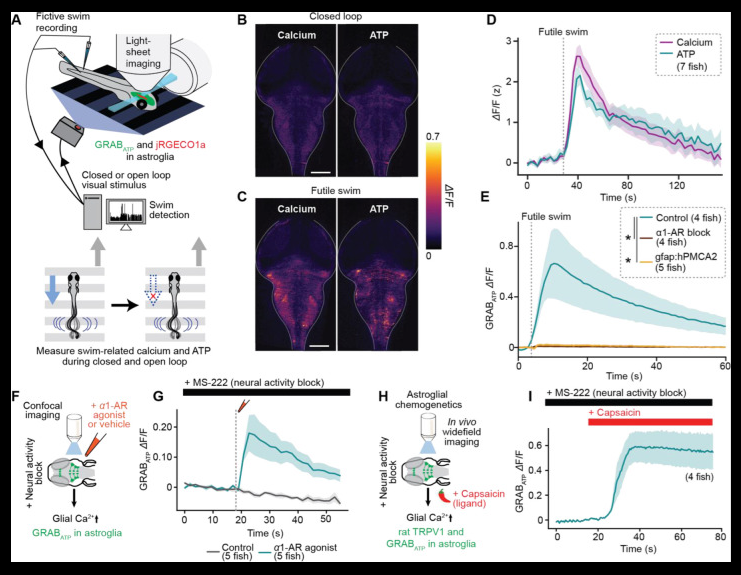You are here
Whole-brain neuron-astrocyte computations for behavior
Speakers
Abstract
Brain function emerges from communication between large numbers of neurons distributed across different brain regions that integrate sensory information, store memories, control internal organs, and trigger behavioral decisions. To track information flow across the brain, we created a system for whole-brain neuroscience. This system adapts light-sheet imaging to record from entire larval zebrafish brains, while animals behave in virtual reality environments, and combines this with online cluster computing to perturb the brain based on cellular function. Using this suite of techniques, we discovered circuit mechanisms underlying multiple behaviors. These include a previously-unknown brainstem area that communicates with the cerebellum and implements a memory for the fish's location in space, allowing fish to navigate back to its home location. We expanded the measurements to astrocytes to discover a neuromodulatory-astroglial mechanism for 'giving up' behavior, showing that astroglia play an active role in neural computation. To find out how astroglial computation feeds back to neurons, we examined the extracellular space to discover an ATP-adenosine biochemical pathway that enables the multi-cell-type communication underlying behavioral state switches. I will also discuss ketamine's long-term effects on this circuit. In sum, flexible behavior is mediated by brain-wide computation in both neuronal, astroglial, and extracellular biochemical pathways, which are becoming increasingly accessible through combinations of microscopy, molecular biology, quantitative behavior, and machine learning.

